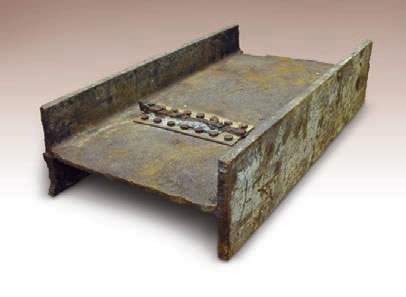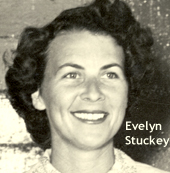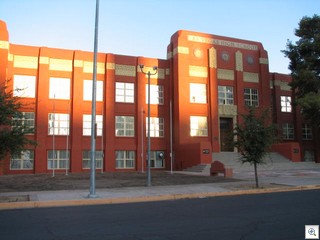Looking for the UPDATED info on the upcoming Las Vegas High School program? Click here
Yes, Las Vegas has culture. You know that. I know that. It's not a myth.
Here's some of the cultural events happening in the Las Vegas Valley this week:
“The Wall That Heals,” a half-scale replica of the Vietnam Veterans Memorial in Washington, D.C., will return to Mesquite, Nevada, Feb. 25 – March 1. The City of Mesquite first hosted the wall nearly five years ago.
Located on the grounds of the City of Mesquite Recreation Center, the exhibit will feature the replica wall, stretching nearly 250 feet in length and containing the names of more than 58,000 men and women who died while serving the U.S. Armed Forces in the Vietnam War. The exhibit also includes a museum and information center, providing a comprehensive educational component to enrich and complete the visitor experience.
“We are honored to have been asked by the Vietnam Veterans Memorial Fund to host “The Wall That Heals” once again,” said Mesquite Mayor Susan Holecheck. “Mesquite is home to more than a thousand veterans. It’s a very moving experience to be able to bring this message of healing to many who would not otherwise have the opportunity to experience the power of the memorial in Washington, D.C.”
Since its dedication in 1996, “The Wall That Heals” has visited more than 300 cities and towns throughout the nation, spreading the memorial’s healing legacy to millions and educating young people about the Vietnam War.
On Wednesday, Feb. 24, a motorcycle escort from the Patriot Guard of Nevada will accompany the truck containing the replica wall from St. George, Utah to Mesquite. The Wall will be available for visitors 24 hours a day from 7 a.m. on Thursday, Feb. 25 through 6 a.m. on Monday, March 1. Each evening at 5 p.m. names will be read from the wall. The names selected are those who began their military service from Southern Nevada and Southern Utah, and those who have relatives currently living in the Virgin and Moapa Valleys. Daily formal ceremonies are free and open to the public:
· Opening Ceremony – Thursday, Feb. 25 at 10 a.m.
· Service of Prayer and Reconciliation – Friday, Feb. 26 at 10 a.m.
· Southern Paiute Veterans Ceremony – Saturday, Feb. 27 at 1 p.m.
· Closing Ceremony – Sunday, Feb. 28 at 3 p.m.
The 2010 visit of “The Wall That Heals” is sponsored by Greg Lee of the Eureka Hotel & Casino with the assistance of the City of Mesquite, the Vietnam Veterans of America, Chapter 993, local volunteers, the Traveling Wall committee and the local business community.
ATOMIC TESTING MUSEUM

Greetings!
On February 27, 2010 at 1:00 p.m., the Nevada Test Site Historical Foundation (NTSHF) will mark the Fifth Anniversary of the Atomic Testing Museum (ATM).
On this day, we will be dedicating two artifacts from the World Trade Center, which is one of the biggest events the Foundation has ever planned. To date, we are still seeking sponsors to meet our goal of raising $50,000 for these events.
Thus far, we have raised $38,000. As your support in the past has helped sustain the many events and projects the NTSHF/ATM has offered its members and the public, once again, we are appealing to your generous support, especially for the dedication of the WTC artifacts and the development of the permanent exhibits for these pieces.
To donate contact Dawn Barlow at 702-794-5147 or
Donate to the Museum online.
To make a reservation to witness a memorable event honoring our fellow citizens and heroes who lost their lives during the World Trade Center attack, click Reserve.
We look forward to seeing you on February 27th at the Museum.
Thank you in advance for your support.
THE SMITH CENTER FOR THE PERFORMING ARTS TOPPING OFF CEREMONY:
The Smith Center for the Performing Arts gets one step closer to opening its doors as it celebrates the “topping out” of Reynolds Hall, reaching its highest point of 170 feet. The ceremony will begin with a live performance down City Parkway by Clark High School Marching Band and will culminate with the raising of the final steel beam, topping out construction for this monumental project.
Guests in attendance will have the opportunity to sign the final steel beam before it is put in place, becoming a part of The Smith Center’s history. Immediately following the ceremony, tours of The Smith Center will be available.
WHO: Myron G. Martin, President & CEO
Donald D. Snyder, Chairman of the Board
Oscar B. Goodman, Mayor of Las Vegas
Mr. Fred W. Smith, Chairman of the Donald W. Reynolds Foundation
Clark High School Marching Band
WHEN: Thursday, February 25, 2010
2:45 p.m. – 5:00 p.m.
WHERE: The Smith Center for the Performing Arts Construction Site
Entrance to the construction site is available from Clark Avenue, located on Grand Central Parkway, just north of Bonneville Avenue.
Hi,
If you have any footage that you have shot of UFOs, aliens, mysterious creatures or other unexplained phenomena, please contact me immediately. We have a budget so WE CAN PAY YOU, and the better the clip the better the $.
Thanks in advance for your help and look forward to seeing your clips ASAP!
Sincerely,
David Ballard
Producer
PARANORMAL INVESTIGATORS
SyFy
P.S. -- Even if you're not sure what is on the footage, we want to see it! (Part of show is debunking hoaxed/fake clips.)
Email me here if you want Mr. Ballard's contact info.




